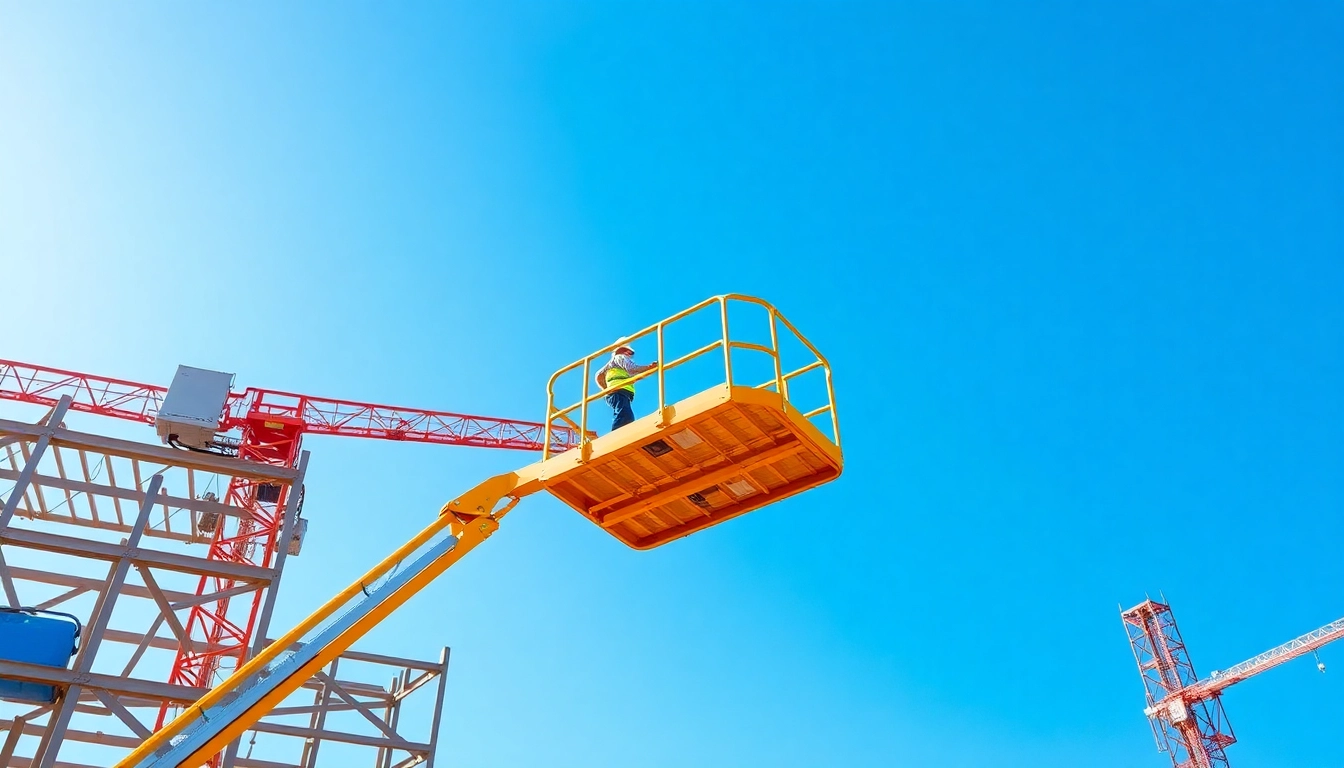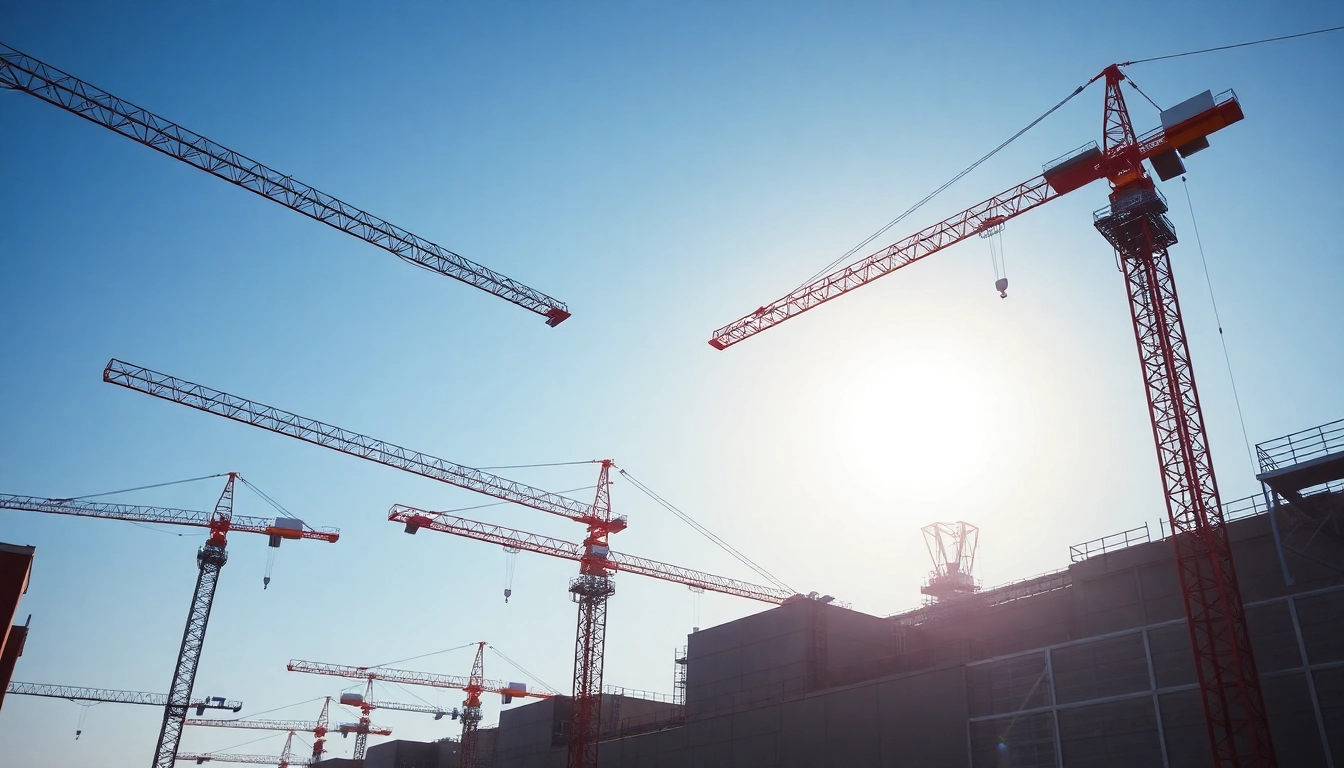Understanding Aerial Work Platforms and Their Applications
In the dynamic world of construction, maintenance, and industrial operations, safety, efficiency, and versatility are paramount. Aerial work platforms (AWPs), also known as elevated work platforms or cherry pickers, have become indispensable tools for safely reaching high elevations and performing tasks that would otherwise be challenging, dangerous, or time-consuming. For many businesses across the UK, aerial work platforms rental offers a cost-effective and flexible solution, enabling access to the right equipment precisely when and where it’s needed. This comprehensive guide explores the various types of AWPs available for rent, their applications, benefits, and best practices to optimize safety and productivity.
Types of Aerial Work Platforms Available for Rent
The landscape of aerial work platforms is diverse, tailored to different project requirements, terrain types, and operational environments. Understanding the distinctions and specifications of each type is essential for selecting the most suitable equipment.
1. Scissor Lifts
Characterized by their compact design and vertical lift capability, scissor lifts provide stable and safe access for indoor and outdoor tasks. They operate through crisscrossing supports that extend vertically, offering platform heights typically ranging from 6 to 20 meters. Ideal for maintenance, electrical work, and warehouse operations, scissor lifts are known for their robustness and ease of operation.
2. Boom Lifts (Articulating and Telescopic)
Boom lifts are highly versatile, capable of reaching complex work areas that require horizontal outreach as well as vertical height.
– Telescopic boom lifts are designed with a straight boom that extends outward, ideal for outdoor construction and industrial applications where direct reach is prioritized.
– Articulating boom lifts feature multiple jointed sections, allowing access to hard-to-reach spots, such as above obstacles or within confined spaces.
These lifts can handle heights ranging from 10 to over 50 meters, making them suitable for everything from building facades to high-voltage electrical work.
3. Cherry Pickers
Often used interchangeably with boom lifts, cherry pickers are mobile aerial platforms focusing on one or two operators. They provide easy maneuverability for tasks like tree trimming, window cleaning, or stage setup.
4. Vertical Personnel Lifts
Designed primarily for indoor use, these lifts are compact and lightweight, offering quick elevation for maintenance tasks, installing fixtures, or technical inspections at heights typically around 9 to 13 meters.
5. Crawler and Spider Lifts
Crawler lifts possess tracked undercarriages for off-road stability, suitable for uneven or rough terrain. Spider lifts are a subtype, featuring articulating arms and compact designs for narrow access, often used in heritage restoration or complex industrial settings.
Common Industries Using Aerial Work Platforms
The versatility of AWPs makes them vital across numerous sectors. Key industries include:
- Construction: For structural work, ceiling installations, and facade repairs.
- Facility Maintenance: Lighting, HVAC repairs, cleaning, and electrical upgrades.
- Telecommunications and Utilities: Installing, maintaining, and repairing cables, antennas, and electrical lines.
- Warehousing and Logistics: Stock replenishment, inventory management at height.
- Event Management: Setup for stages, lighting rigs, and decorations.
The growing demand for safety and efficiency drives many of these industries towards renting AWPs, avoiding the costs and logistical challenges associated with ownership.
Key Advantages of Renting Aerial Platforms
Opting for rental over purchase offers several benefits, making it a strategic choice for various projects:
- Cost-Effectiveness: Avoid high upfront capital expenditure; rental costs are typically covered within project budgets.
- Access to Latest Technology: Rental companies regularly update their fleets with modern, well-maintained equipment, ensuring safety and efficiency.
- Flexibility: Hire different types and sizes of AWPs tailored to specific tasks without long-term commitment.
- Maintenance and Support: Rental providers handle equipment maintenance, inspections, and compliance, reducing downtime and legal risks.
- Reduced Storage and Disposal Concerns: Renting eliminates storage issues and disposal costs associated with ownership.
- Enhanced Safety and Compliance: Rental companies ensure equipment adheres to UK safety standards, providing peace of mind.
This strategic approach allows businesses to concentrate on core operations while leveraging high-quality equipment on demand.
Choosing the Right Aerial Work Platform Rental Service
Factors to Consider When Selecting a Provider
The success of your project hinges significantly on choosing a reliable rental partner. Key factors include:
- Equipment Quality and Condition: Ensure the provider maintains rigorous inspection and servicing protocols.
- Range and Availability of Equipment: Confirm that the provider offers a comprehensive selection suitable for your needs.
- Compliance and Safety Standards: Verify adherence to UK safety standards, certifications, and operator training provisions.
- Customer Service and Support: Responsive support for booking, delivery, troubleshooting, and emergencies is vital.
- Pricing Transparency: Obtain clear quotations with detailed breakdowns, including delivery, setup, and usage charges.
- Local Accessibility: Proximity to your site minimizes transport delays and costs.
Comparing Rental Costs and Equipment Quality
Cost comparison should go beyond basic rental rates. Evaluate:
- Inclusions such as operator training, safety checks, and post-rental support
- Duration-based discounts or package deals for long-term projects
- Additional fees for delivery, setup, or excess usage
Prioritize providers known for maintaining a high standard of equipment, as this directly affects safety and operational efficiency. Companies like Aerial Platforms Ltd and Rentmas are recognized for their quality and service excellence in the UK market.
Location and Availability of Rental Options in the UK
With UK-wide coverage, reputable rental firms ensure equipment availability across various regions. For localized needs, especially in cities like Newcastle or London, selecting providers with regional depots guarantees quick turnaround times. The right partner offers flexible rental periods, swift delivery, and tailored support for your specific geographic and project requirements.
Best Practices for Safe and Effective Use
Inspection and Maintenance Tips Before Operation
Prior to operation, a thorough inspection is crucial. Check:
- Structural integrity of the platform and supports
- Hydraulic and electrical systems for leaks or faults
- Safety devices such as emergency stops, alarms, and harness points
- Operational controls for responsiveness and accuracy
Regular maintenance, per manufacturer guidelines, ensures the longevity and safe operation of the equipment.
Operator Training and Safety Protocols
Only trained and competent operators should operate AWPs. Training covers:
- Understanding of equipment controls and safety features
- Risk assessment and site-specific hazards
- Emergency procedures and rescue plans
- Proper PPE usage and fall protection
Investing in operator competence significantly reduces accidents and legal liabilities.
Maximizing Efficiency with the Right Equipment
Select equipment that matches the scope and environment of your project. For instance, indoor tasks benefit from electric-powered lifts, which produce no emissions and operate quietly. For outdoor or uneven terrains, rugged, tracked models provide stability. Proper planning, including assessing load capacities and reach requirements, enhances operational efficiency and safety.
Implementation Steps for Your Aerial Work Platform Rental
Assessing Project Requirements and Site Conditions
Begin with a detailed analysis:
- Define the scope: heights, reach, duration, and tasks involved
- Survey site conditions: space constraints, ground stability, access routes
- Identify environmental factors: weather, indoor/outdoor use, proximity to power lines
Booking and Coordinating Rental Logistics
Engage with your chosen provider early to:
- Confirm equipment availability aligned with project timelines
- Arrange delivery and setup schedules, including site access permissions
- Ensure required documentation, such as operator qualifications and safety certificates, are in place
Preparing the Site for Safe Equipment Use
Proper site preparation enhances safety and efficiency:
- Clear obstacles and hazards from the equipment’s operating zone
- Ensure stable, level ground support
- Coordinate power source connections if needed
- Establish clear communication protocols among team members
Performance Metrics and Return on Investment
Measuring Project Success with Aerial Platform Use
Quantifying success involves tracking:
- Work completion times compared to baseline estimates
- Safety incident and accident rates
- Quality of work and adherence to specifications
Properly utilized AWPs can significantly improve these metrics, leading to safer and more efficient projects.
Cost Savings and Productivity Boosts
Rental equipment reduces downtime caused by maintenance or ownership costs. Efficient access reduces labor time and minimizes project delays. For example, using an articulated boom lift instead of manual scaffolding can decrease setup time and increase reach flexibility.
Long-Term Benefits of Reliable Rental Services
Consistent access to well-maintained equipment ensures:
- Enhanced safety and compliance with legislation
- Reduced risk of equipment failure and associated liabilities
- Operational flexibility for future projects
- Strengthened reputation for safety and professionalism
Partnering with a trusted rental provider creates a foundation for sustained project success.

